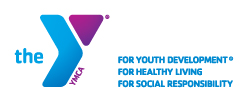Running is great exercise, however, it can cause repetitive strain on body parts and be a source of injury. Here are the top 5 most common running injuries, how they occur and the best ways to treat them.
1. Runner’s Knee
Runner’s knee is an aching pain around or behind the kneecap. It’s also called patellofemoral pain syndrome.This can occur because of strength and flexibility imbalances, or shoes that do not give proper support, which eventually cause the kneecap to rub incorrectly. Typically, the condition is treated with correct shoe selection, orthotics and strengthening / stretching exercises. Talk to a sports medicine doctor about getting into physical therapy and learning about the best exercises to heal runner’s knee.
2. Stress Fractures
Stress fractures can be caused by overtraining, a shortage of calcium, or by some basic biomechanical flaw — either in your running style or your body structure. Common stress fractures in runners occur in the tibia (the inner and larger bone of the leg below the knee), the femur (thigh bone) and in the sacrum (triangular bone at the base of the spine) and the metatarsal (toe) bones in the foot. See a doctor who specializes in running injuries. Pool running is sometimes a safe alternative to training while recovering from a stress fracture.
3. Iliotibial Band Syndrome (ITBS)
Marked by a sharp, burning knee or hip pain, ITBS is a very common running injury among marathoners. Indeed, it’s responsible for as many as 80% of all overuse pains on marathon day. The ITB runs along the outside of the thigh — from the top of the hip to the outside of the knee. It stabilizes the knee and hip during running, but when it thickens and rubs over the bone, the area can become inflamed or the band itself may become irritated — causing pain. ITBS may be caused by running on a banked surface; inadequate warm-up or cool-down; running excessive distances; increasing mileage too quickly, or certain physical abnormalities may cause it. Rest, ice, compression, and elevation (RICE) and anti-inflammatory medications are first-line treatments. Physical therapy may also be helpful.
4. Shin Splints
The most common type of shin splints happen on the inside of legs. These medial shin splints are a running injury that results from a biomechanical flaw in your foot (which can be made worse by a shoe that doesn’t offer enough support) and/or overtraining. Begin by making sure you have a foot evaluation to determine the correct shoe for your foot type. Flexibility problems at the foot and ankle are also a common cause of shin splints. Make sure you stretch your calf muscles before and after every run.
5. Plantar Fasciitis
Characterized by foot pain in the middle of the arch or near the heel, plantar fasciitis is a running injury most frequently caused by an abnormal motion of the foot or too-tight calf muscles. Treatment should focus on determining your foot type and selecting the correct running shoe and orthotics if indicated. A good stretching program, with emphasis on the calf musculature should be done before and after every run.
Specialized Care for Runners
Do you have a nagging injury or pain when you run? We can help. The YMCA is excited to have partnered with DMC Rehabilitation Institute of Michigan to provide physical therapy services on site at the Livonia, Milford and Macomb YMCAs. The staff specializes in physical therapy, orthopedic therapy and sports medicine. To make an appointment call 313-745-3380.
To learn more about the causes, symptoms and treatment of common running injuries, you can also download the Detroit Medical’s Center’s FREE running App: Run with DMC. Visit the App’s video library for great advice on selecting shoes, stretching and warm-up exercises to enhance your running performance and maintain your running health.


